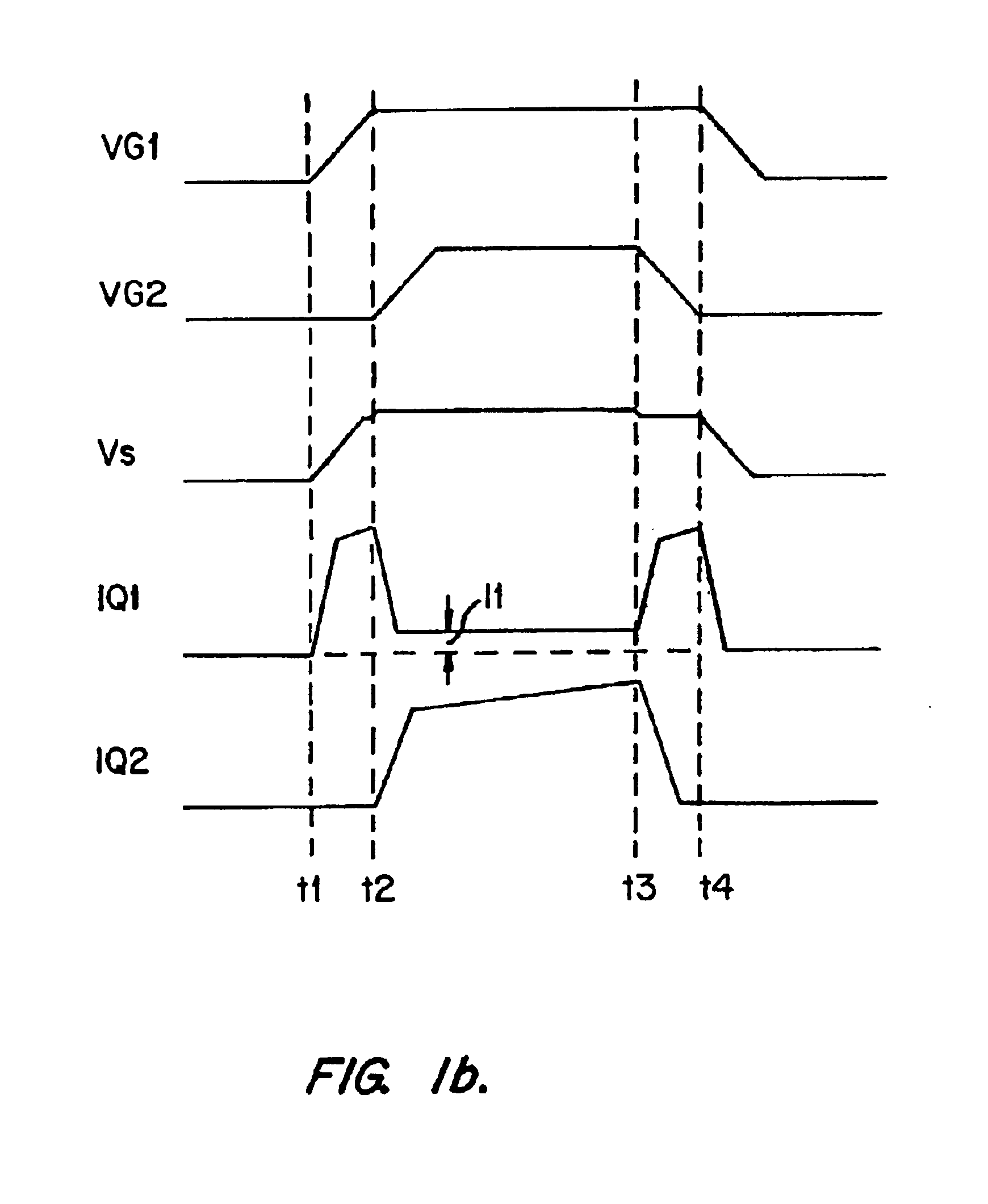Method and circuit for reducing losses in DC-DC converters
a dc-dc converter and loss reduction technology, applied in the field of integrated circuits, can solve the problems of large dynamic loss, slow control signal rise and fall times, and dominant loss of gate capacitance switching, so as to reduce dynamic loss, reduce conduction loss, and reduce dynamic and conduction loss. the effect of independent reduction
- Summary
- Abstract
- Description
- Claims
- Application Information
AI Technical Summary
Benefits of technology
Problems solved by technology
Method used
Image
Examples
Embodiment Construction
[0030]In accordance with the present invention, a method and circuitry for implementing switching converters that improve switching efficiency by reducing the conduction loss, the dynamic loss, and the gate capacitance switching loss are provided. The switching converter includes two transistors Q1 and Q2 parallel-connected between two terminals. Transistor Q1 is optimized to reduce the dynamic loss and transistor Q2 is optimized to reduce the conduction loss. Q1 and Q2 are configured and operated such that the dynamic loss of the converter is dictated substantially by Q1 and the conduction loss of the converter is dictated substantially by Q2. Thus, the tradeoff between these two types of losses present in conventional techniques is eliminated, allowing the dynamic and conduction losses to be independently reduced. Further, the particular configuration and manner of operation of Q1 and Q2 enable reduction of the gate capacitance switching loss when operating under low load current ...
PUM
 Login to View More
Login to View More Abstract
Description
Claims
Application Information
 Login to View More
Login to View More - R&D
- Intellectual Property
- Life Sciences
- Materials
- Tech Scout
- Unparalleled Data Quality
- Higher Quality Content
- 60% Fewer Hallucinations
Browse by: Latest US Patents, China's latest patents, Technical Efficacy Thesaurus, Application Domain, Technology Topic, Popular Technical Reports.
© 2025 PatSnap. All rights reserved.Legal|Privacy policy|Modern Slavery Act Transparency Statement|Sitemap|About US| Contact US: help@patsnap.com



